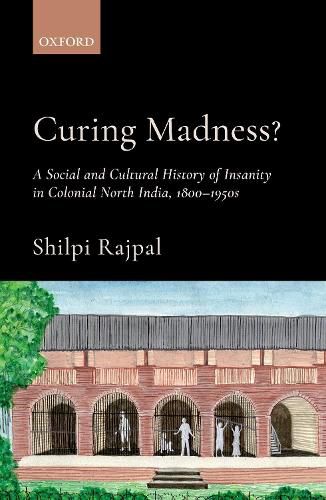Readings Newsletter
Become a Readings Member to make your shopping experience even easier.
Sign in or sign up for free!
You’re not far away from qualifying for FREE standard shipping within Australia
You’ve qualified for FREE standard shipping within Australia
The cart is loading…






Curing Madness? focusses on the institutional and non-institutional histories of madness in colonial north India. It proves that ‘madness’ and its ‘cure’ are shifting categories which assumed new meanings and significance as knowledge travelled across cultural, medical, national, and regional boundaries.
The book examines governmental policies, legal processes, diagnosis and treatment, and individual case histories by looking closely at asylums in Agra, Benaras, Bareilly, Lucknow, Delhi, and Lahore. Rajpal highlights that only a few mentally ill ended up in asylums; most people suffering from insanity were cared for by their families and local vaidyas, ojhas, and pundits. These practitioners of traditional medicine had to reinvent themselves to retain their relevance as Western medical knowledge was widely disseminated in colonial India. Evidence of this is found in the Hindi medical advice literature of the era. Taking these into account Shilpi Rajpal moves beyond asylum-centric histories to examine extensive archival materials gathered from various repositories.
$9.00 standard shipping within Australia
FREE standard shipping within Australia for orders over $100.00
Express & International shipping calculated at checkout
Curing Madness? focusses on the institutional and non-institutional histories of madness in colonial north India. It proves that ‘madness’ and its ‘cure’ are shifting categories which assumed new meanings and significance as knowledge travelled across cultural, medical, national, and regional boundaries.
The book examines governmental policies, legal processes, diagnosis and treatment, and individual case histories by looking closely at asylums in Agra, Benaras, Bareilly, Lucknow, Delhi, and Lahore. Rajpal highlights that only a few mentally ill ended up in asylums; most people suffering from insanity were cared for by their families and local vaidyas, ojhas, and pundits. These practitioners of traditional medicine had to reinvent themselves to retain their relevance as Western medical knowledge was widely disseminated in colonial India. Evidence of this is found in the Hindi medical advice literature of the era. Taking these into account Shilpi Rajpal moves beyond asylum-centric histories to examine extensive archival materials gathered from various repositories.